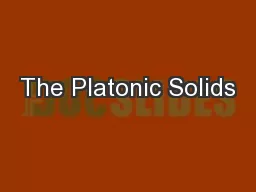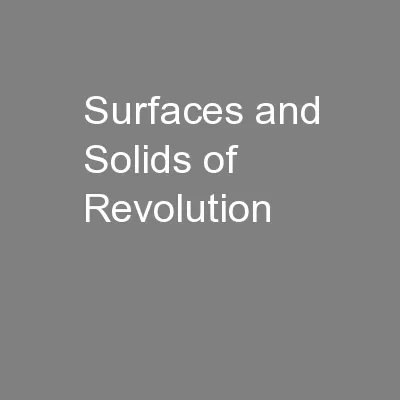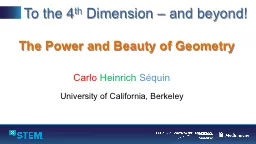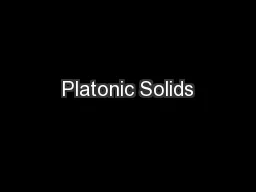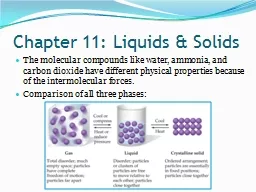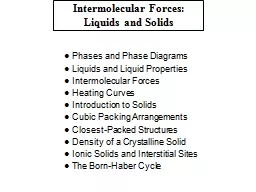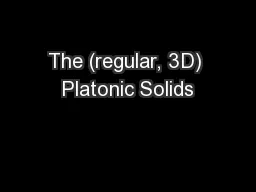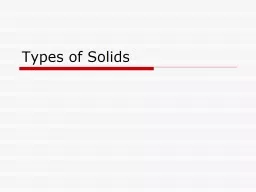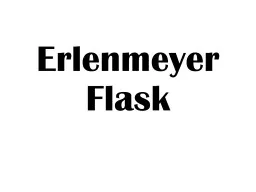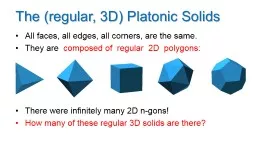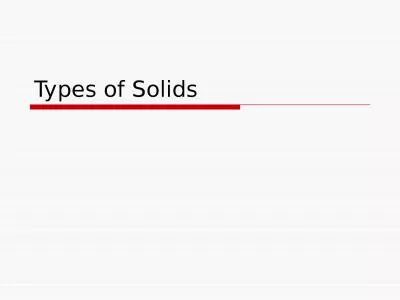PPT-The Platonic Solids
Author : test | Published Date : 2015-10-17
In Perspective Symmetry and Regularity Objects that are symmetrical look the same from several different views or two sides are mirror images of each other Symmetric
Presentation Embed Code
Download Presentation
Download Presentation The PPT/PDF document "The Platonic Solids" is the property of its rightful owner. Permission is granted to download and print the materials on this website for personal, non-commercial use only, and to display it on your personal computer provided you do not modify the materials and that you retain all copyright notices contained in the materials. By downloading content from our website, you accept the terms of this agreement.
The Platonic Solids: Transcript
Download Rules Of Document
"The Platonic Solids"The content belongs to its owner. You may download and print it for personal use, without modification, and keep all copyright notices. By downloading, you agree to these terms.
Related Documents

